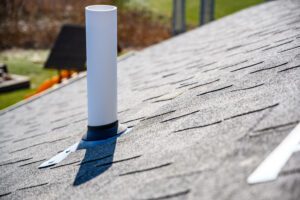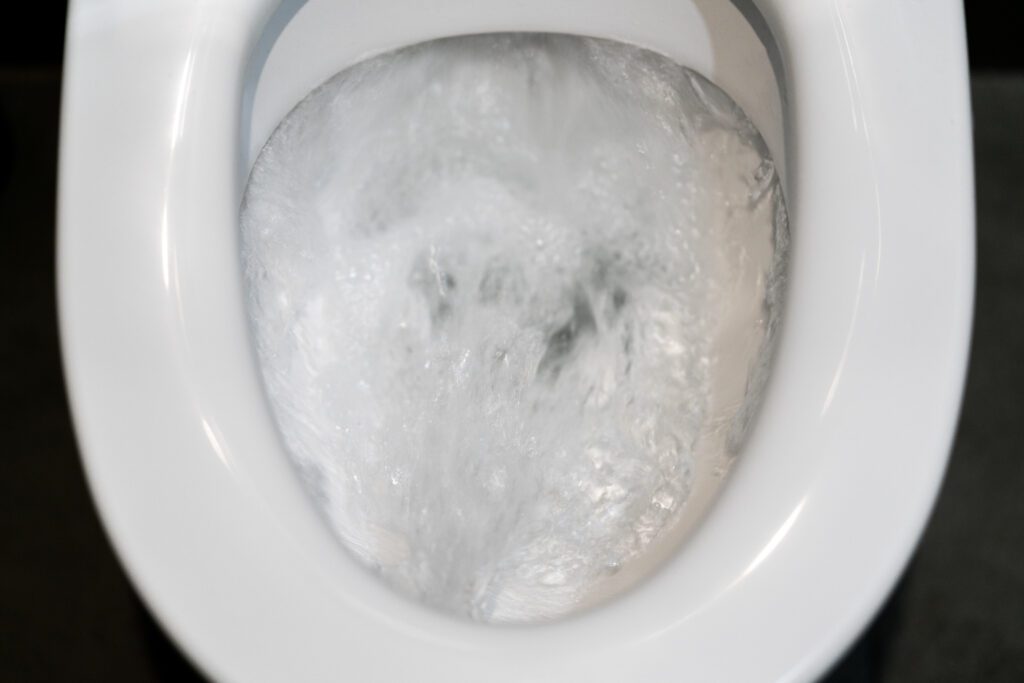Introduction:
Have you ever wondered why toilet water moves on a windy day? Well, the reason is fairly simple. It’s because plumbing fixtures in most houses are connected to vent lines, that are in turn connected to a larger vent stack that protrudes through the roof, see the picture below. All houses have one or more of these protruding through their roofs.
When it’s windy outside, air passes over the opening of the vent stack at varying velocities which oscillates the pressure in the vent stack, which in turn sloshes the water around in your toilet. The pressure oscillations inside of the vent stack happen due to vortices created as a result of the Bernoulli principle. If you google this, you can find much more detail on the actual equation and the factors that are used to perform various calculations. This is a principle in the area of fluid mechanics, which in mathematical terms, describes how airplanes fly.

Technical Explanation:
Since I’m an engineer, whenever I’m asked a question like this by my family, I get accused of answering with entirely too much unnecessary technical detail. They are not wrong as evidenced above, I guess that makes me a bit of a geek. However, this explanation also may trigger a thought or two about things you notice in your own home that may be useful. The video below gives a great overview of what happens on windy day, and the simple drawing illustrates the basic plumbing of how a toilet is connected to both the drain, and the vent stack I mentioned above.
Practical Takeaway:
If you want to take anything practical out of this short article, learning about how plumbing fixtures are connected to vent line may be of some use. If your toilet or other plumbing fixtures are not connected to a properly sized vent line, they will still drain, but it will be agonizingly slow. So, if you have a sink or tub that drains very slowly, it’s most likely due to a partially plugged drain line or P-trap. However, if you are having difficulty getting it to drain faster, and there’s no clog in the line and the p-trap is clear, it could be that the plumbing was not properly installed, especially in older homes. The vent line could be too small, or the fixture may not be vented at all. This can happen when DIY’ers attempt to do things they are not qualified for, or a contractor doing a re-model job takes illegal shortcuts.
Hope this information is useful in some way!
For More Useful Homeowner Tips, Check Out Post on Homeowner Essentials: Tips All Homeowners should know.


